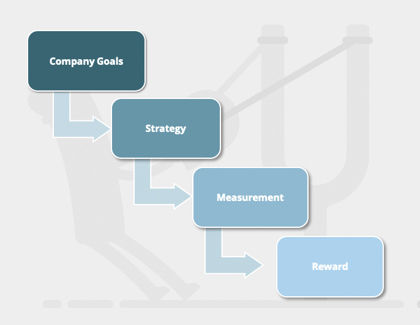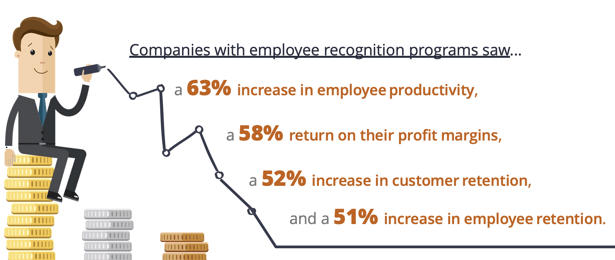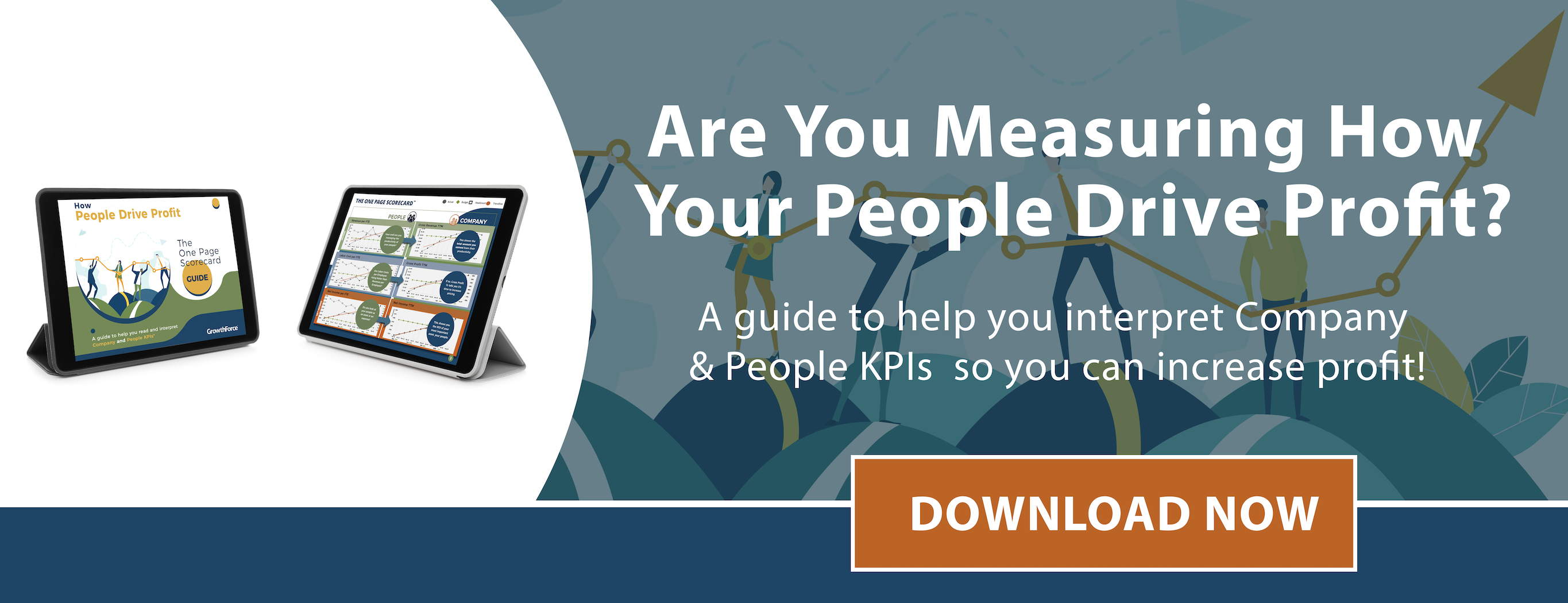6 min read

“A goal properly set is halfway reached.” —Zig Ziglar.
Don’t put employee goal setting on the back burner this year.
The start of a new year welcomes a new opportunity to help employees set their professional goals and set the tone of your organization for the year ahead.
|
Key Takeaways
|
Encourage your employees to set professional goals that will best serve both themselves and your company’s mission. Now is the time to review strengths, areas of improvements, and establish benchmarks for each of your team members.
It Starts at the Top: Cascading goals
For an organization to be successful, a priority needs to be placed on making sure every employee and manager knows what they need to accomplish in the present and future.
This starts at the top, but flows throughout. This is described as cascading goals - assigning smaller (but related) goals to departments, teams, and individuals that all contribute to achieving the overall operational goals.
Driving alignment between an organization's goals and employee's roles, Cascading goals are a crucial part of a lean business model and should be a focal point of your management strategy. Employees with a clear line of sight and specific goals understand how their objectives directly affect their team, department and the overall company goals.

Having leadership work with employees to set goals is one step in the right direction. By setting measurable and attainable goals, a supervisor not only guides improvement in employee performance, but is helping to drive performance and profitability in an organization.
10 TIPS to Help Your Employees Set Better Professional Goals in 2021
1. Make It A Priority
 |
Set aside time on the calendar to have managers sit down with each team member to carve out their personal goals. Making this concrete shows employees how important their professional growth is to the organization. This also fosters a clear line of communication between managers and employees. It allows leadership to lay out clear expectations so you’re always on the same page. When it comes time to conduct a performance review, there are no surprises (for either party). |
2. Write It Down
|
|
An often overlooked, but impactful step. Written goals will significantly increase success rates and chances of achieving those goals. According to a landmark Harvard study, setting goals and writing down your objectives enhances your motivation and increases your likelihood of success. Moreover, companies that had written objectives showed a 700% increase in growth versus those that didn’t. |
3. Start With A Self-Review
 |
Have employees conduct a self-review on how they think stack up against your company's core values. This allows them to reflect on their own personal growth. Entering the year with this self awareness will encourage productivity and inspire them to reach their goals. This also gives them a benchmark to look back on at the end of the year. |
4. Make SMART Goals
 |
If you don't think of goals with the SMART framework, they tend to not have meaning or validity. Therefore, it will be difficult to make them attainable. Use the SMART structure to set goals and help employees set their goals using this same framework: |
- Specific- The goal should be very specific on what it is set to accomplish. One way to make sure you cover your bases is to include the answers to the basic W questions: who, what, when, where, why.
- Measurable – How will you measure the set goal? What metrics will you use to determine if you’ve reached your goal or not? Make sure the goal has a numeric or descriptive measure tied to it. This will also make the goal more tangible because it helps measure progress.
- Achievable – Outline what actions or steps need to be done to make the goal attainable. A goal should inspire productivity and motivation- not discouragement. Make sure the goal is within the employees’ ability and control.
- Relevant – How does the employee’s personal goal fit in with your organization’s mission? Reinforce the goal’s relevance to the company’s core values.
- Timely – Establish a clear (and realistic) timeline for goal completion and goal progress. Include the frequency of specific action steps that are important for achieving the goal. Providing time restrictions also creates a sense of urgency and sparks motivation.
5. Employee Goal and Company Goal Alignment
 |
Have employees set both long term and short term goals. This exercise will help align your employees’ goals with your company's goals. It helps them see where they fit into the organization and encourages engagement. This is where the concept of cascading goals comes in: Assigning smaller but related objectives to departments, teams, and individuals that all contribute to achieving the overall operational objectives. Weekly, monthly, quarterly goals is a good way to start. |
6. Open A Group Discussion.
.png?width=150&name=Calendar%20Date%20(1).png) |
After meeting with each employee to reflect on their individual professional goals for the year ahead, set a team discussion. Create an open dialog to discuss how each goal fits in with the company’s mission, timeline, and how each team member can help each other achieve their personal goals. This exercise allows teams to feel more connected and motivated to start the year right. |
7. Require Consistent Progress Updates.
 |
Persistence is key. Have managers schedule monthly or quarterly check-ins with employees. Holding employees accountable will help keep them on track to reaching their goals. They have a chance to correct their efforts before they become completely derailed. This also further enforces the open communication between the employees and managers. |
8. Recognize Employees When They Achieve Their Goals.
 |
This is arguably one of the most valuable (and neglected) components of of goal setting. One of the most impactful factors in employee productivity and motivation is for their hard work to be recognized. When employees are recognized for their work, not only does this help increase productivity, but also boosts your bottom line. |
The numbers speak for themselves: The Society of Human Resource Managers, found that companies with employee recognition programs and good career development guidance saw a 63% increase in employee productivity, a 58% return on their profit margins, a 52% increase in customer retention, and a 51% increase in employee retention.

Source: Society of Human Resource Management (SHRM®)
9. Company-Wide Goal Transparency
 |
|
10. Stick To A Growth Mindset
.png?width=145&name=Growth%20Mindset%20(1).png) |
Encourage a Growth Mindset amongst employees. Goal setting with a Growth Mindset is focused on a long-term change that does not happen overnight- It requires tenacity and perseverance. When leaders lead with a growth mindset, they seek challenges and embrace failure as a positive part of the learning and growth process. Encourage employees to keep their goals in sight, pushing through frustrations and challenges along the way. |
Your People are Your Biggest Asset.
If you have goals set and measure against them, you'll be able to understand what's reasonably attainable. Looking at your most profitable people and most profitable clients will help you set realistic goals.
Where do you start? If you don't know how to see your most profitable people, our How People Drive Profit Guide is a great start point. Knowing the ROI of your employees is crucial in improving your business' profitability.
Get the guide to see 6 KPI Charts you should have at your fingertips to help you drive performance and profit in your business!

.png?width=563&height=144&name=New%20GF%20Logo%20(37).png)


